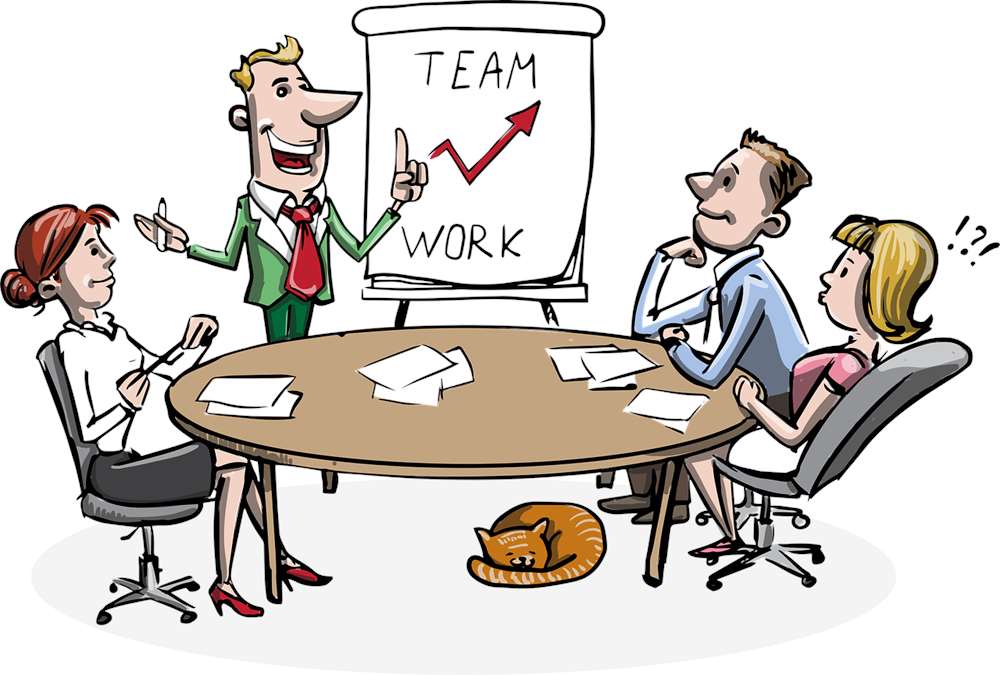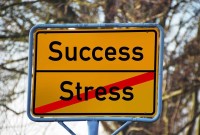- Home
- Business Processes
- Industry Knowledge
- Aerospace Industry
- Automotive Industry
- Banking Domain
- BFSI Industry
- Consumer/ FMCG Industry
- Chemicals Industry
- Engineering & Construction
- Energy Industry
- Education Domain
- Finance Domain
- Hospitality Domain
- Healthcare Industry
- Insurance Domain
- Retail Industry
- Travel and Tourism Domain
- Telecom Industry
- Leadership Skills
- eLearning
- Home
- Leadership Skills
- Creativity Tools
- Building Perfect Creative Team
Building Perfect Creative Team
One misconception around creativity is that creative act is essentially solitary. Most of the world's important inventions resulted not from the work of one lone genius, but from collaboration of a team with complementary skills. Managers should build teams with the ideal mix of traits to form a creative group and then establish the conditions that make creativity much more likely to occur.
Most of us have the misconception that creativity is like a genie that can't be bottled. It is almost impossible to determine who from your team will be involved in a creative act and secondly, you cannot predict what action will end up being creative, or precisely when or how it will occur. Further, the characteristics that are necessary for creative work seem contradictory, and they rarely exist in one person.
Most of the ideas in today’s organizations are actually a result in a cohesive and diverse team. Teams are increasingly important in today's businesses as they ensure a level of creative output that is greater than what individuals working alone are capable of achieving.
In order to achieve creative output from your teams, you have to carefully examine the composition of your group. You need to make sure that your group, as a whole, has all the requisite skills and attributes that help a group produce creative ideas. Recent research has shown that, as a manager, you can create the conditions that make creativity much more likely to occur. That is, you can increase the probability of innovation.
So what's involved in creating these conditions?
- Carefully determining the composition of your group and ensuring it is a diverse group and allow flexibility. Flexibility is the individual's ability to produce not only a large number of responses, ideas, or solutions to a problem, but also a variety of responses, ideas, or solutions to a problem.
- Enriching the workplace environment—the psychological and the physical environment to encourage innovation. The allow degree of psychological openness; based on the belief that creative behavior requires a person to consider a variety of information when processing information and to keep an "open mind."
- Providing tools and techniques that enhance creativity and idea generation. Individuals and groups who make important discoveries pass through a number of stages. The stage of illumination, when a flash of insight occurs, is the next-to-last stage. Although this stage tends to get the entire glamor most innovations come about only after much hard work, many dead ends, and more than a few apparent breakthroughs that don't pan out.
- Managing the process of innovation so that the best insights and ideas are translated into innovative products, services, and ideas.
Preferred Thinking Styles
Teams ensure a level of creative output that is greater than what any individual could achieve. The key ingredient here is intellectual diversity. You need people with different areas of expertise and deep knowledge in different disciplines, but you also need people with different thinking styles. To create a creative group one should focus on preferred thinking styles, functional specialties, and the particular skills that influence how a person approaches a problem. An intellectually diverse group thinks more creatively and is more likely to generate innovative solutions. You can't make people adopt a different thinking style, but you can orchestrate thinking styles in such a way that your group's output benefits from the different perspectives.
The preferred thinking style is the unconscious way a person looks at and interacts with the world. When faced with a problem or dilemma, a person will usually approach it by thinking in the way she is most comfortable. And although each style has particular advantages, no one style is better than another.
There are many different ways to describe how people think and make decisions. When different thinking styles rub against each other, creative sparks fly. That's the insight behind the phrase creative abrasion. For the purposes of ensuring that your group has all the characteristics necessary for creative work, given below are some different thinking styles.
1. People with Imagination Skills:
Being creative implies always being positive in the world; enabling us to convert any problem into an opportunity. Creativity enables us to engage ourselves to do new and better things and let us take one step closer to attain our full potential. Creative thinking starts with imagination as it brings about something that did not exist or was not known before, so it has to be imagined first. They show the capability to imagine or invent something new. It is not the only quality but also skills that are needed to do a particular task in a productive manner. These people are more comfortable with ideas and concepts, with the "big picture."
2. People with Conceptual Skills:
The creative imagination must have a purpose, an objective to serve the responsibilities of the business. Conceptual people define the problem by comparing it to a clear vision for the future. They have a novel, transformational ideas and get things started and able to paint a picture. Conceptual people tend to lose energy at implementation. These people prefer logical processes and orderly ways of approaching problems.
3. People with Analytical Skills:
They define the problem by developing a clear picture of the current situation and select the solution based on pros/cons analysis and will always emphasize on metrics. They will ensure that the product or result must be something that can be held in great esteem, i.e. having admirable qualities, especially of intrinsic value. These people tend to process information internally first before presenting the results to others. These people like things more open; they tend to be more comfortable with ambiguity and often want to collect still more data before reaching a decision.
4. People with Structural Skills:
They focus on process and procedure and have ideas on improving efficiency and effectiveness while retaining structure. They are generally energized by plans, initiative, and implementation and seek closure to items. These people tend to prefer hard data, concrete facts—information that is closely tied to the five senses. These people tend to prefer closure—they like having all the loose ends tied up.
5. People with Social Skills:
These folks are good at bringing people together to discuss and define the problem. They are attracted to problems involving interpersonal interaction and look to see what others are doing (best practices). They are the ones who is motivators and encourages group cohesion. These people look to other people as the primary means of processing information. These people are more attuned to emotional cues; they are more likely to make decisions based on the values or relationships involved.
Everyone exhibits all five of these tendencies, but they do it in varying degrees. For example, it's not that a feeling person is incapable of logical thought rather; it's that his or her thinking about a decision tends to be guided by the emotional impact of that decision on key relationships. Start with yourself: how would you characterize your own thinking style? Knowing your own preferences helps you appreciate other thinking styles—you begin to understand how different perspectives can complement or round out your own.
Related Links
You May Also Like
-
Evidence of the medically damaging symptoms of work stress necessitates applying the treatment of stress management. Stress management is increasingly drawing the attention to the management experts not only as a remedial measure but also as a way to resource management. If the workplace can be made a little more lovable the increase in the achievement of the organization may be much time more. If group stress can be removed by introducing group discussions and recreational facilities a long-lasting team spirit may get developed.
-
The best career choices are ones that match your values. Each person has several values that are important to him. These values are highly personal and knowing them provides a clearer sense of what's most important to you in your life and career. Career values are the beliefs you consider important from a work standpoint. Values help you understand what you want from a job? Explore a few examples of work values that can influence career path and job satisfaction.
-
Understanding Concept of Creativity
Part of your job as a manager is to foster new ideas. But how do you assemble a team with the right mix of skills and perspectives to promote creativity? Creativity is the ability to come up with new and different ideas or breakthrough fixed ways of thinking. Learn how to manage an intellectually diverse work group and their environment to produce more and better ideas that encourage innovation when developing products and work processes.
-
Stress is a product of the busyness of modern life. It has assumed grave dimensions ever since the emergence of industrialism. In fact, stress is a natural, ongoing, dynamic, and interactive process that takes place as people adjust to their environment. Stress can be brought about by positive or negative life events. Distress can cause disease and eustress or positive stress can promote wellbeing and increased productivity. Learn to recognize and be responsible for your stress, and learn the ways to manage stress.
-
In today's innovation-driven economy, understanding how to generate great ideas has become an urgent managerial priority. Managers need to encourage and champion ideas and need to help their organizations incorporate diverse perspectives, which spur creative insights and facilitate creative collaboration by harnessing new technologies. Innovation is the embodiment, combination, and/or synthesis of knowledge in original, relevant, valued new products, processes, or services.
-
Investment Theory of Creativity
Sternberg in the year 2006, proposed the investment and confluence theory focused on understanding creativity. According to the investment theory, creativity requires a confluence of six distinct but interrelated resources known as intellectual abilities, knowledge, styles of thinking, personality, motivation, and environment. It emphasizes that creativity is not about one thing, but about a system of things.
-
Process & Stages of Creativity
Creative ideas do not come just like that. There is a process to it. There are a number of techniques of creativity to support the generation of ideas but the widely practiced ones are brainstorming and lateral thinking. Most innovations are not so much the product of sudden insights as they are the result of a conscious process that often goes through multiple stages. The creative process can be divided into four stages of preparation, incubation, evaluation, and implementation.
-
Understanding Corporate Strategy
Management outlook and procedures have been revolutionized by more and more innovations over the recent years. It is no longer possible to follow traditional approaches to develop your organization's direction, its management as well its effectiveness. Senior managers need to be good decision-makers. In this section, we introduce concepts for strategy, strategic planning, strategic leadership, their exact meaning and associated terms, and how to use them.
-
Creating Highly Effective Teams
How do we create effective teams? What comes to mind when you think about an effective team? High performing teams exhibit accountability, purpose, cohesiveness, and collaboration. It is a team that works seamlessly as a whole. Everyone brings unique talents and strengths and support each other to bring out the best in everyone. How do you create one?
-
Benefits of Teams in Workplace
The use of formal work teams is commonplace in modern organizations. But why we have teams? What are the benefits or advantages that teams provide for organizations and employees? Do we really need to adopt formal team structures and use team-building approaches in organizations? Read this article to explore and learn the benefits of having formal teams in organizations.
Explore Our Free Training Articles or
Sign Up to Start With Our eLearning Courses

About Us
Learning
© 2023 TechnoFunc, All Rights Reserved










